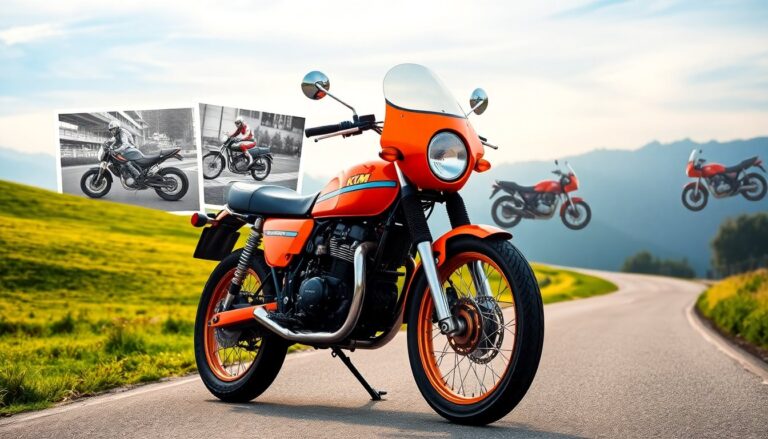Argomenti trattati
KTM, a brand synonymous with innovation and performance in the motorcycle world, has a rich history dating back to 1934. Originally founded as Kronreif & Trunkenpolz Mattighofen, the company has evolved significantly, carving out a niche in both off-road and street motorcycle markets. Here are the facts: KTM’s remarkable journey highlights key milestones and technological advancements that have shaped its identity.
The facts
The story of KTM began in the small Austrian town of Mattighofen, where engineer Johann Trunkenpolz established a modest workshop focused on vehicle repairs. By 1937, the business expanded to include the sale of DKW motorcycles, laying the groundwork for future developments. The name was later registered as Kraftfahrzeug Trunkenpolz Mattighofen, but it wasn’t until after World War II that the company shifted its focus toward manufacturing its own motorcycles.
First motorcycle production
In 1951, the company produced its first prototype, the R100, marking a significant pivot towards motorcycle production. With a small team of just 20 employees, KTM began serial production in 1953. This initial foray into manufacturing saw the production of three motorcycles daily, a modest start that would soon grow into a vast operation.
Expansion and innovation
The 1960s brought a wave of innovation and expansion. Under the guidance of Ernst Kronreif, who became a key shareholder in 1953, KTM introduced several successful models, including the R125 Tourist and the Grand Tourist. The company also made its mark in competitive racing, achieving its first national racing title in 1954. This early success laid the foundation for KTM’s future dominance in motorsports.
Entering the global market
As the company continued to grow, it transitioned from a national player to an international contender. By the 1980s, KTM had established a strong presence in the United States, creating a subsidiary in Ohio to cater to the burgeoning American market. The company’s innovations during this period included the development of advanced engines and cooling systems, which became a hallmark of KTM’s performance-oriented motorcycles.
The modern era: Restructuring and new partnerships
In the 1990s, KTM faced financial challenges that necessitated a restructuring of its operations. The company was divided into four distinct divisions, allowing for a more focused approach to motorcycle production, bicycle manufacturing, and radiator development. This restructuring ultimately paved the way for renewed growth and the introduction of cutting-edge models.
Strategic partnerships have played a significant role in KTM’s recent success. Collaborations with companies like Bajaj Auto have expanded KTM’s production capabilities and market reach, particularly in Asia. Additionally, the acquisition of Husqvarna and GasGas has further solidified KTM’s position within the motorcycle industry.
Racing legacy and accomplishments
KTM’s commitment to motorsports is evident in its extensive list of achievements. The brand has claimed over 260 world championship titles across various disciplines, including motocross, supercross, and rally racing. Their dominance in the Dakar Rally is particularly noteworthy, with an impressive streak of consecutive victories from 2001 to 2019, showcasing KTM’s engineering prowess and competitive spirit.
Looking to the future
As KTM continues to innovate, its focus remains on developing high-performance motorcycles that cater to a diverse range of riders. The company’s commitment to sustainability is evident in its growing investment in electric models, reflecting the changing landscape of the motorcycle industry. With plans to expand their e-bike portfolio and enhance their traditional offerings, KTM is poised to remain a leader in the two-wheeled market.
KTM’s journey from a modest repair shop to a global motorcycle powerhouse illustrates the power of innovation and perseverance. With a rich heritage in racing and a commitment to technological advancements, KTM is well-positioned for future success in the competitive motorcycle landscape.

